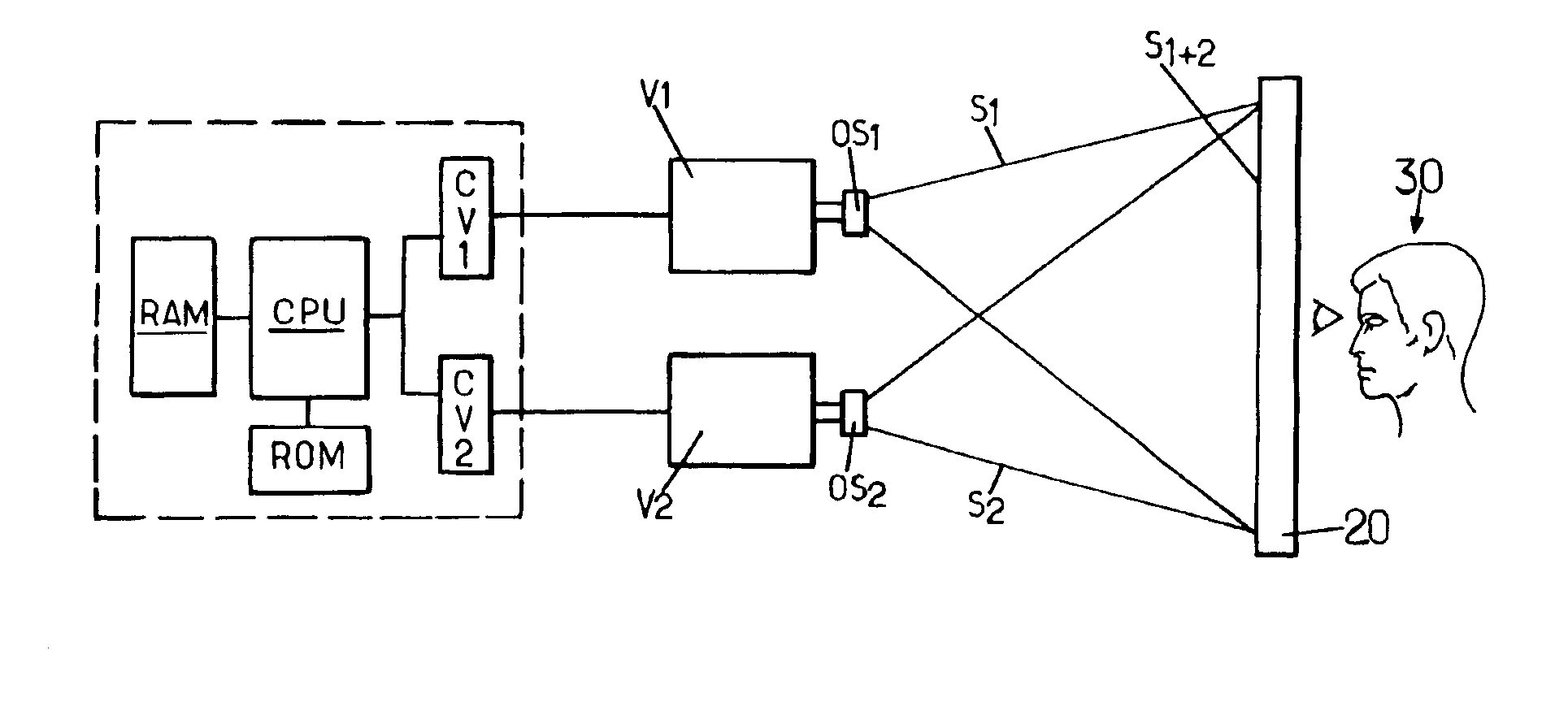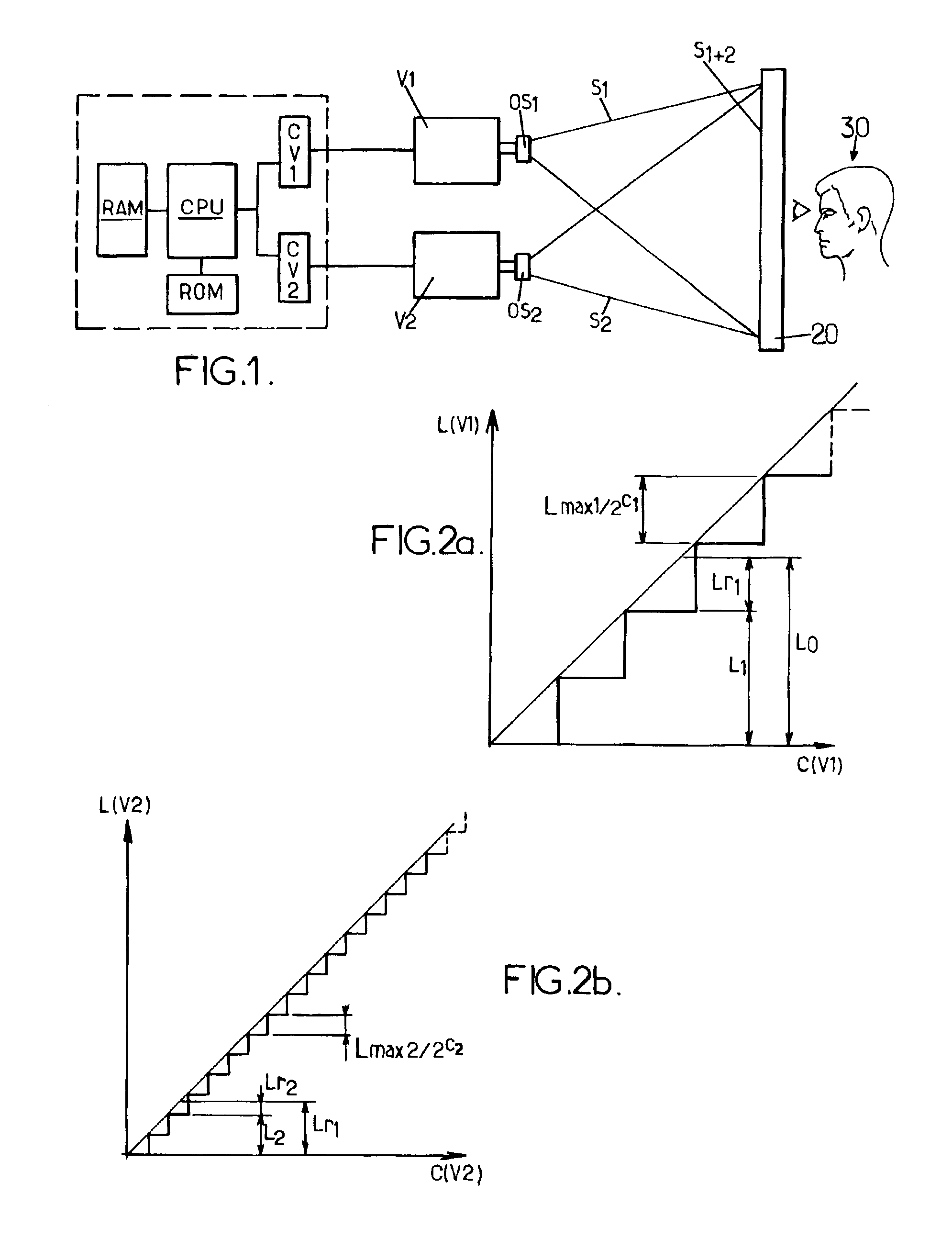Method and device for restoring a light signal
a light signal and light signal technology, applied in the field of light signal restoration, can solve the problem that it is no longer possible to obtain color transitions perceived as continuous, and achieve the effect of increasing the fineness of colorimetric coordinate encoding, small brightness steps, and contributing to the fineness of brightness steps
- Summary
- Abstract
- Description
- Claims
- Application Information
AI Technical Summary
Benefits of technology
Problems solved by technology
Method used
Image
Examples
Embodiment Construction
[0025]The principle of the invention is described below by considering first of all the simple case of a gray-level colorimetric system. In such a colorimetric system, a light signal is defined by one and only one colorimetric coordinate which corresponds to a brightness value, hereinafter called L0, associated with the only component of the light signal in this system. Note that it is easy to pass from a trichromatic system such as the RGB system to a gray-level system by applying the same command to the three R, G and B components such that they are always at identical levels. Moreover, it is considered that the behavior of the device is linear, that is to say that variations of the input command result in corresponding variations of the brightness values generated.
[0026]In FIG. 1, a device according to the invention comprises a first video projector V1 having a particular maximum light flux F1 and at least a second video projector V2 having a particular maximum light flux F2, suc...
PUM
 Login to View More
Login to View More Abstract
Description
Claims
Application Information
 Login to View More
Login to View More - R&D
- Intellectual Property
- Life Sciences
- Materials
- Tech Scout
- Unparalleled Data Quality
- Higher Quality Content
- 60% Fewer Hallucinations
Browse by: Latest US Patents, China's latest patents, Technical Efficacy Thesaurus, Application Domain, Technology Topic, Popular Technical Reports.
© 2025 PatSnap. All rights reserved.Legal|Privacy policy|Modern Slavery Act Transparency Statement|Sitemap|About US| Contact US: help@patsnap.com



